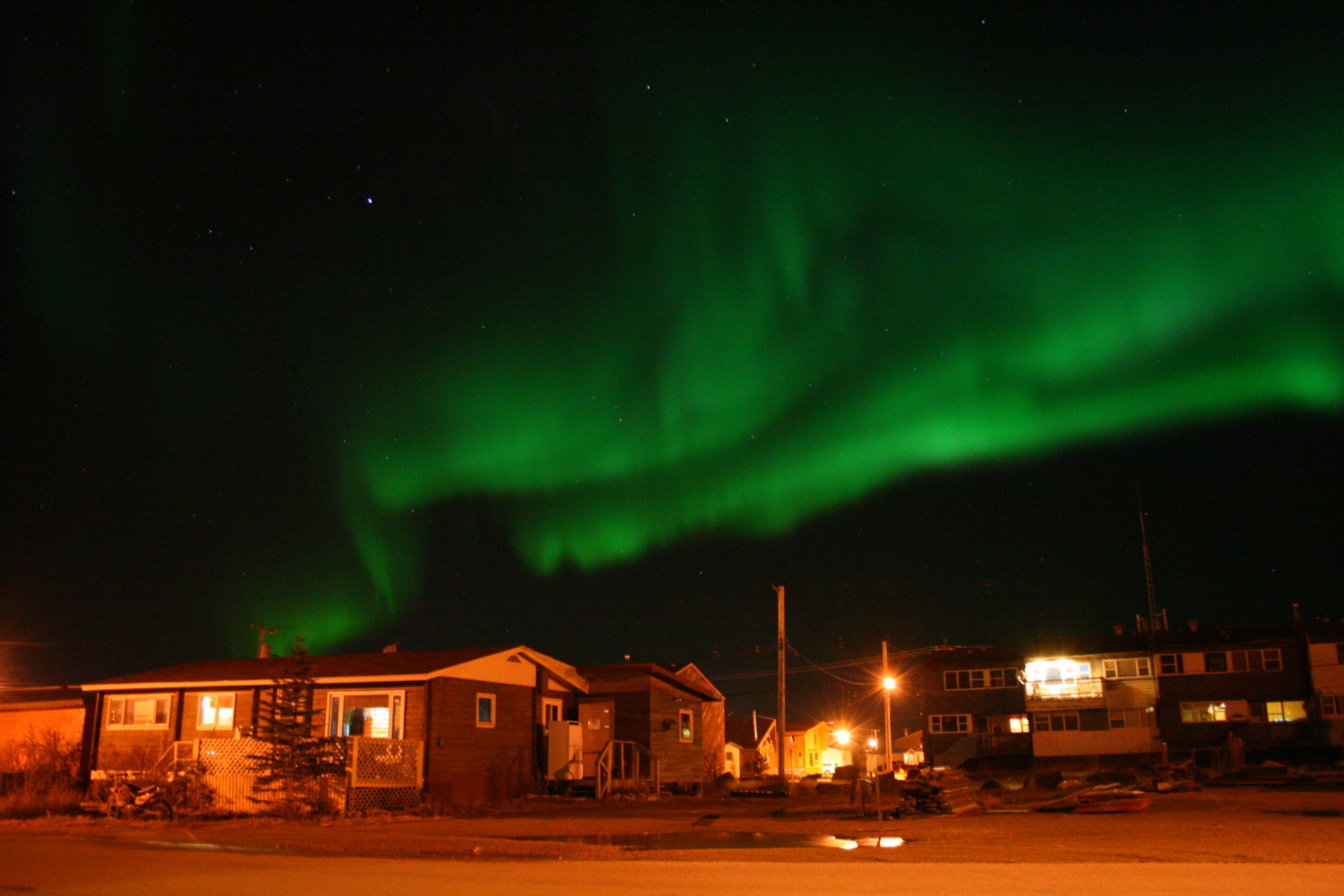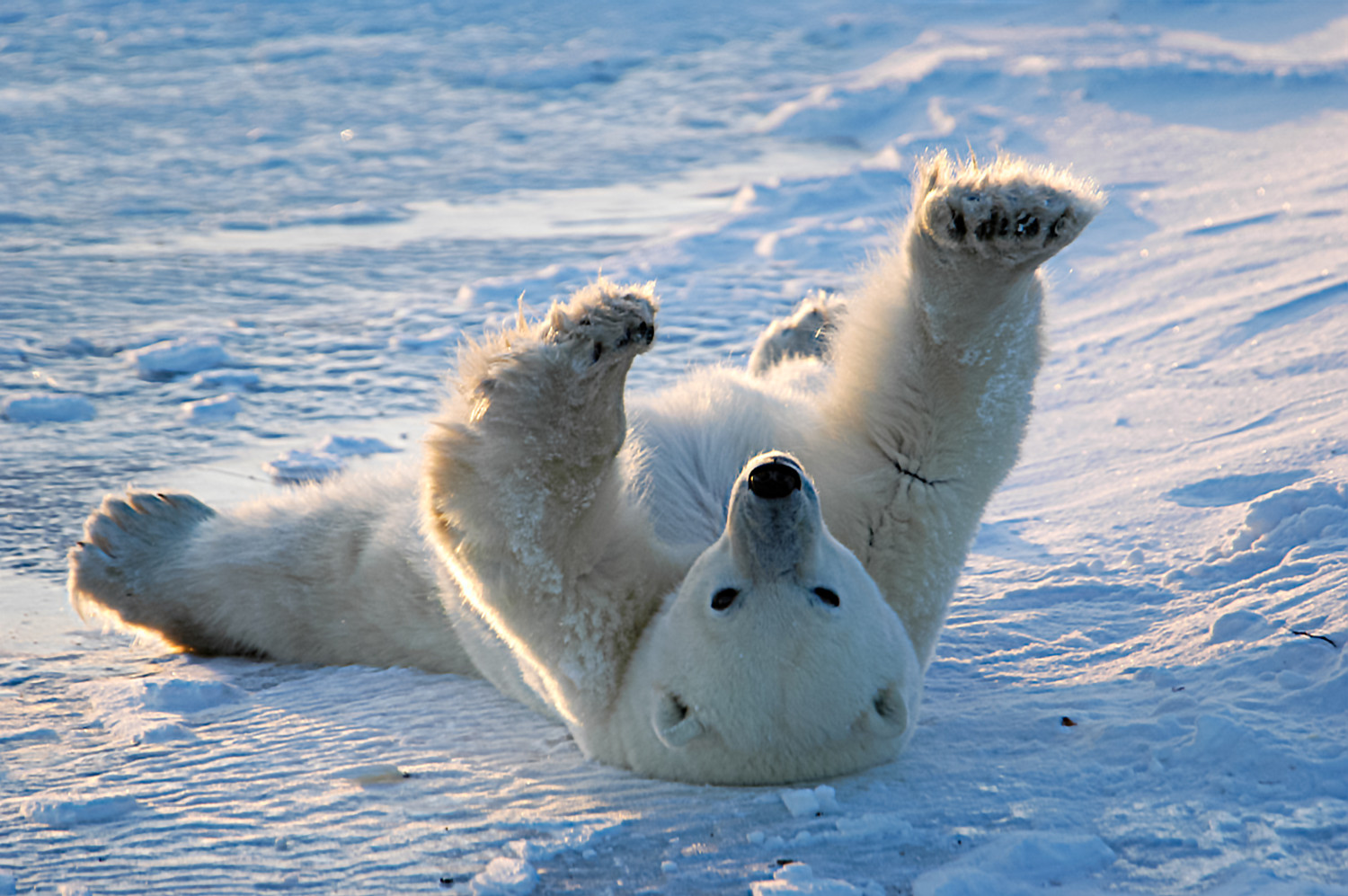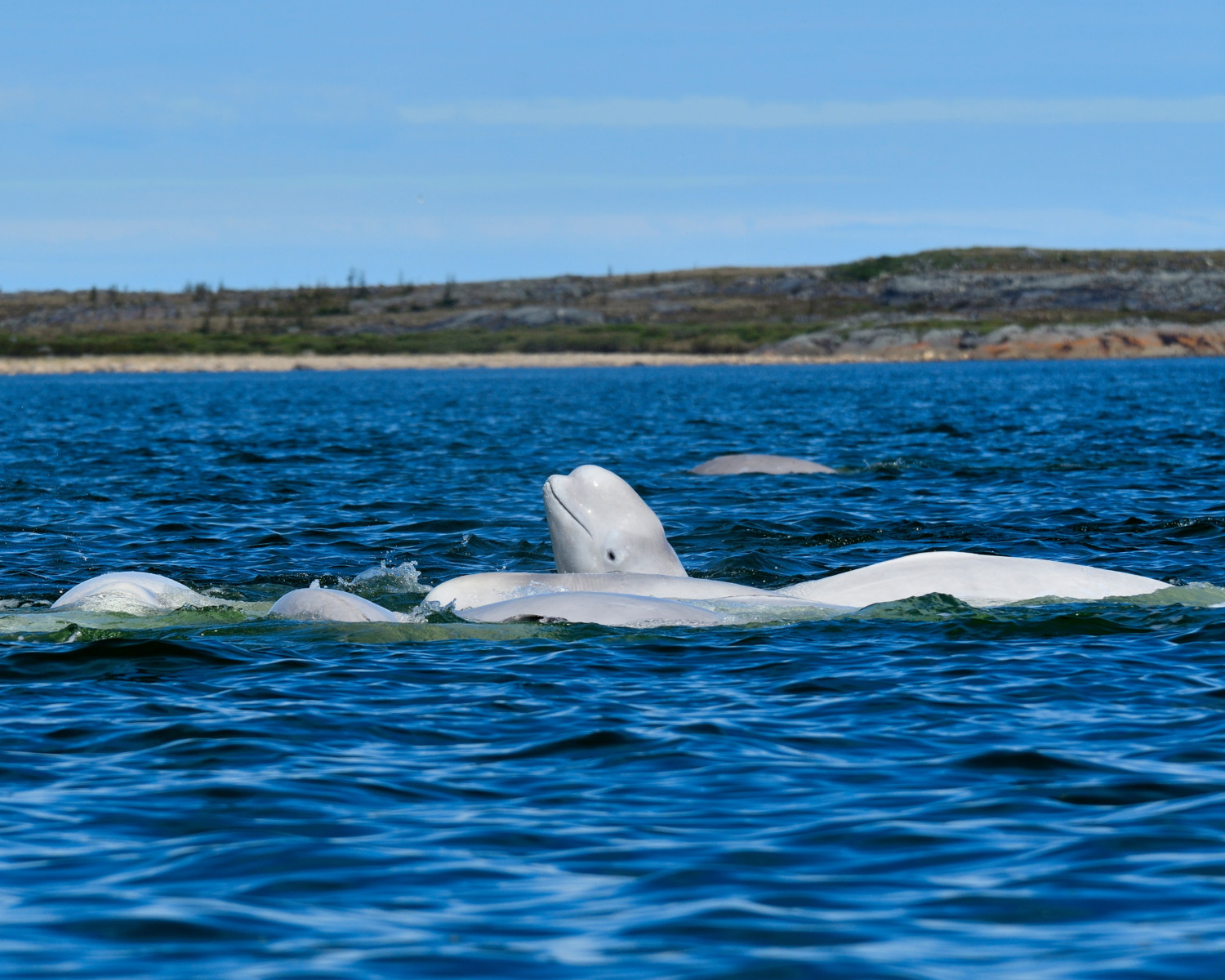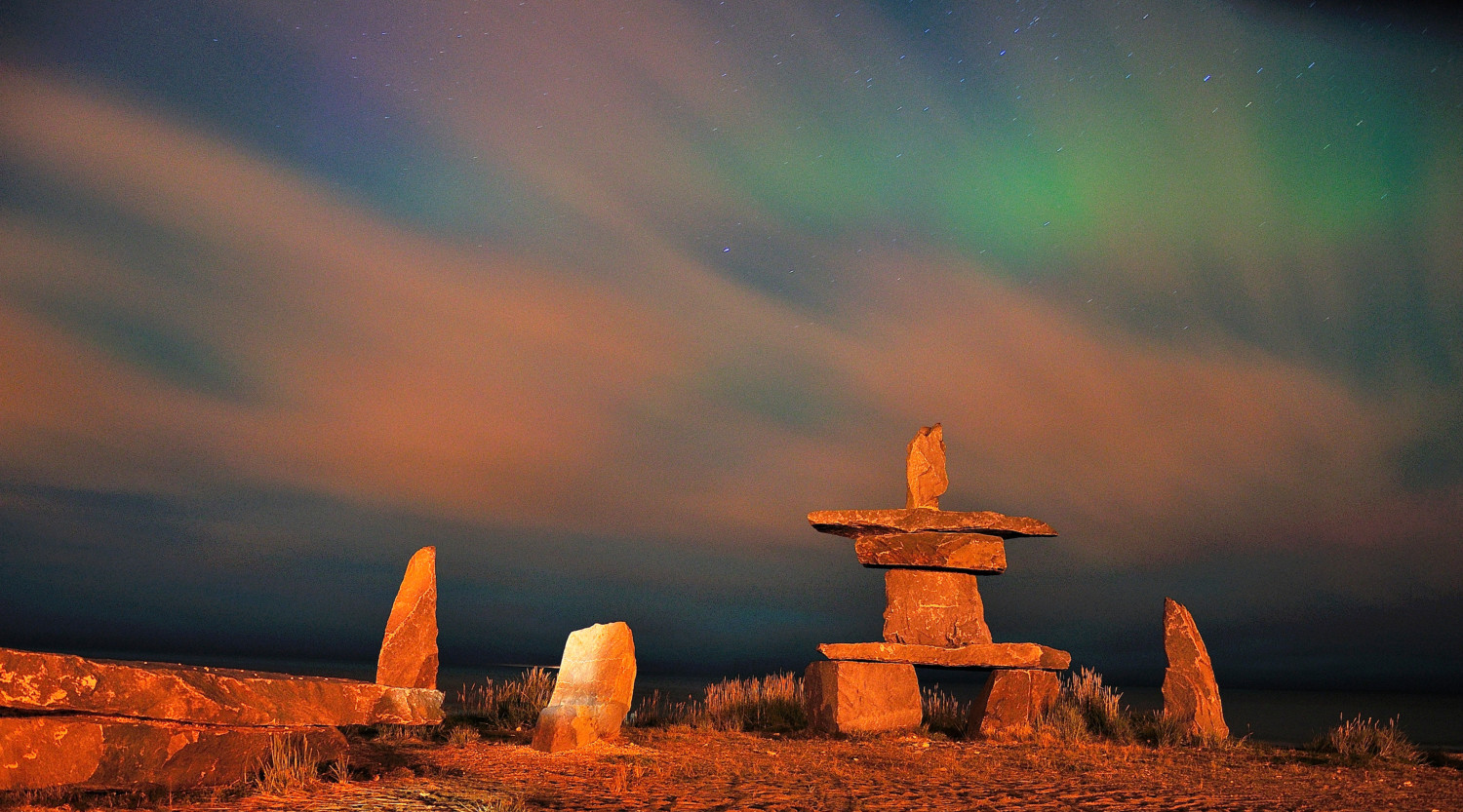The isolated town of Churchill sits on Hudson Bay in the Canadian province of Manitoba. It’s small, but it draws tourists from all over the world because of several unusual attractions, including the northern lights, its many polar bear residents, and summertime beluga whale sightings.
With the boreal forest to the south, the Arctic tundra to the north and Hudson Bay at its edge, Churchill allows visitors to experience three distinct ecosystems in short order.
Getting to Churchill, Manitoba, can be a little difficult because of its isolated location. Winnipeg, Manitoba’s capitol, is 621 miles away — and even the nearest cities, like Thompson, are at least 250 miles away. The only ways to visit are by plane or by train as there are no paved roads to the town.
But visitors will be rewarded with unique experiences that vary by the time of year and are hard to find in many other places.
Churchill’s Northern Lights
Because of the far north and isolated location of Churchill, Manitoba, it has become known as a great spot to see the northern lights, also known as aurora borealis.
This light phenomenon is caused by solar winds bouncing off the earth’s atmosphere. The earth’s magnetic field is weakest at its poles, which is why you can see aurora borealis closer to the Arctic and Antarctica.
As NASA explains, the Earth’s magnetic field lines are nearly vertical at the magnetic poles. Plasmas and electrons traveling those field lines may spiral and hit the atmosphere, a phenomenon that generates light. The colors of the northern lights depend on which chemicals (oxygen, nitrogen, etc.) are excited in the process.

For fans who have always wanted to see the northern lights, Churchill is a great place to catch them. That’s because on average, it has more than 300 nights of aurora activity a year, according to Travel Manitoba. It is in the Auroral Oval, where the lights are most easily spotted. Churchill also has a low KP index, meaning the magnetic storms don’t have to be large for them to be visible there.
The best times to see the northern lights in Churchill are when there’s less precipitation in the sky due to the coldest temperatures (i.e., February and March).
Local tour operators offer a number of organized excursions that are unique experiences in themselves. One, from Frontiers North Adventures, takes you out in large, heated vehicles called tundra buggies. Another, from Natural Habitat Adventures, lets you view the lights from heated domes. There’s even a mobile restaurant where you can drink, dine and see the lights.
Polar Bears
As of 2021, Churchill, Manitoba, had a population of about 870 permanent human residents. Polar bears used to outnumber people, but the bears’ population has declined steeply in recent years. The Canadian government’s 2021 count came up with 618 bears, indicating there are 50% fewer bears than in the 1980s. The same study said polar bear numbers in Churchill have decreased by 27% in five years.
Polar bears are endangered because of the rise in ocean temperatures due to climate change. In warmer water, ice melts sooner as spring comes and takes longer to freeze as the ocean cools in fall and winter. Less ice spaced farther apart makes it harder for polar bears to swim between ice spots while they are hunting seals and other marine life for the sustenance they need. This lack of access to food, in turn, causes other changes. For example, studies show that polar bears are now having smaller cub litters.

Despite the lessening number of polar bears, Churchill is still known as the “polar bear capital of the world” because of the high probability of seeing the animals on a visit.
The bears migrate to Churchill in the fall to wait for the ice to freeze on Hudson Bay so they can go out and hunt on the water. During this peak season, especially in October and November, rugged tundra buggies take tourists out to safely watch polar bears from inside their protected vehicles. You can also see the polar bears from the air or water, or even take a walking tour.
Bear sightings in and around town still happen, but a polar bear alert system has helped keep dangerous encounters low and shooting off loud warning shells usually scare any approaching bears away. Bears that persistently come too close to humans are put in “bear jail,” or holding areas where they are kept well-fed and safe until they can be released at the start of the hunting season.
Beluga Whales
Chirping, often playful beluga whales come to Hudson Bay during the summer to mate, feed and give birth, making Churchill, Manitoba, situated right on the bay, a great area to spot them.
Beluga whales are protected by the Endangered Species Act and considered vulnerable to issues like water pollution, habitat degradation and food source limitations, according to the National Oceanic and Atmospheric Administration — so encountering these beautiful animals is a rare treat.

Western Hudson Bay may see up to 55,000 beluga whales in the summer, with about 3,000 coming to the Churchill area of the bay specifically. According to the Churchill Northern Studies Centre, it’s best to plan a trip to see these marine mammals in late July and early August.
You may wish to join a boat tour for the best viewing. Beluga whales are very social and often approach boats out of curiosity, so visitors can sometimes get up-close looks at them.
Historical Attractions
Aerial tours and licensed expeditions go over and into Wapusk National Forest, where polar bear moms go to make their dens.
Other attractions in Churchill, Manitoba, are man-made rather than natural. Here are a few:
- Fort Prince of Wales National Historic Site out on Eskimo Point was finished in the 1770s and is a good place to learn about European settlement and British-French conflict in the area.
- The remains of a more recent fort, Fort Churchill, and its rocket range can be seen near the airport. This was a Cold War-era military site.
- Inukshuk, rock stacks made by First Nations people possibly for navigation, are located in the area too.
- There’s even a quirky attraction called Miss Piggy, a World War II-era cargo plane that crash-landed within view of Hudson Bay in 1979.

Churchill, Manitoba, seems worth the trek. Would you visit?
This story originally appeared on Simplemost. Check out Simplemost for additional stories.


